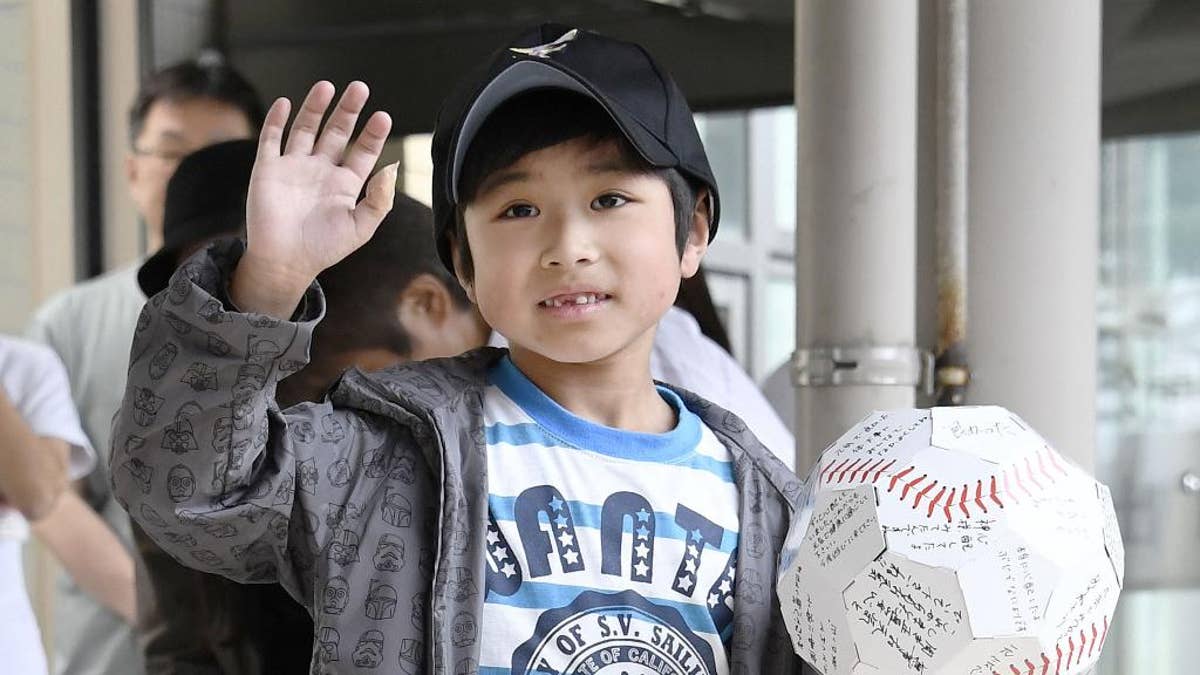
FILE - In this June 7, 2016 file photo, Yamato Tanooka, who survived almost a week in a forest after his parents left him at the side of a road, waves as he leaves a hospital in Hakodate on the northern island of Hokkaido. The Japanese boy was released from a hospital this week, smiling and waving at a crowd cheering the happy ending. Public criticism of the father, who made 7-year-old Tanooka get out of the car to punish him for misbehavior, has faded, and police reportedly won’t pursue charges. (Daisuke Suzuki/Kyodo News via AP, File) JAPAN OUT, MANDATORY CREDIT (The Associated Press)
TOKYO – A 7-year-old Japanese boy who survived almost a week in a forest after his parents left him at the side of a road was released from a hospital this week, smiling and waving to a crowd cheering the happy ending. Public criticism of the father, who made Yamato Tanooka get out of the car to punish him for misbehavior, has faded, and police reportedly won't pursue charges. Some possible explanations why:
Q: Is leaving a child behind considered abuse in Japan?
A: Abandoning a child, or anyone who needs care, is a crime punishable by up to five years imprisonment. However, it's generally enforced when someone abandons a person with no intention of retrieving him or her despite awareness of a life-threatening risk. In this case, the father returned for his son a few minutes later, but the boy had disappeared.
___
Q: Are attitudes toward what constitutes abuse different in Japan?
A: Apparently so. The Japanese Embassy in the United States urges Japanese nationals to be cautious with their children in America. It warns that corporal punishment, a father bathing with his little daughter, or leaving a child outside a supermarket in a shopping cart — all generally accepted in Japan — could be taken as child abuse subject to criminal charges. "Remember, you're not in Japan," the embassy says on its website.
___
Q: Why are attitudes different?
A: In Japan, the concept of children's rights and protection is a relatively new one. It's more common for children to be considered the property of their parents, rather than individuals with their own rights. In a country of conformity, good parents are expected to control their kids. Borderline cases of child abuse are more often viewed as a family matter rather than a crime.
___
Q: Are attitudes changing?
A: Japan signed the U.N. Convention on the Rights of the Child in 1994, obligating it to enact the Child Abuse Prevention Act of 2000. The act defines four types of child abuse — physical, emotional, sexual and neglect — largely modeled on the U.S. definition, but does not include penalties. Instead, guidance centers, governments and schools officials are instructed to intervene in possible abuse cases. The case of the 7-year-old boy split public opinion. While many criticized the father for going too far, others sympathized with him over the challenges of parenting and said they faced similar punishment as children.
___
Q: What is the current trend in Japan regarding child abuse?
A: Japanese are increasingly coming forward to report child abuse cases, with the government attributing this largely to a growing awareness of the issue. Since Japan started collecting data in 1990, the number of cases, including suspected ones, reported to child guidance centers has increased more than sevenfold, with nearly 89,000 in 2014, according to the Ministry of Health, Labor and Welfare. Emotional abuse was the most common type of case, at 40 percent, followed by physical abuse, neglect and sexual abuse. The most vulnerable were elementary schoolchildren, and mothers were most often the perpetrators.
___
Follow Mari Yamaguchi at https://www.twitter.com/mariyamaguchi
Find her work also at http://bigstory.ap.org/content/mari-yamaguchi
